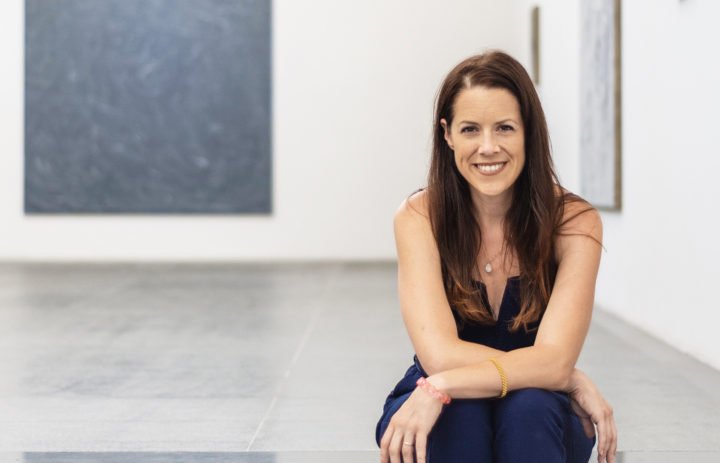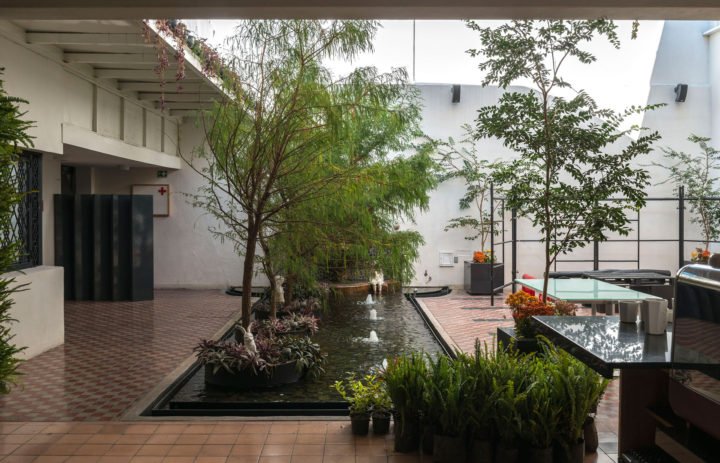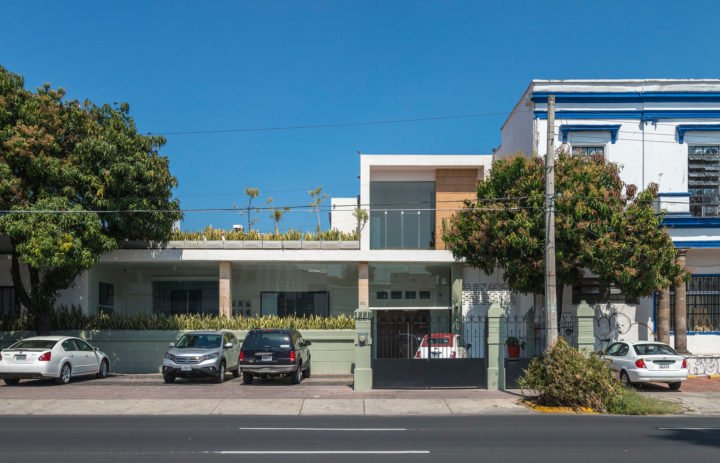- Address: Av. Hidalgo 1228, Col. Americana – C.P. 44160, Guadalajara, Jalisco, México
- Founder/Director: Meaghan Kent
Meaghan Kent (M): Páramo was originally a house in the downtown area of Guadalajara. The fact that the space was formerly a home really lends to the familial approach to our programming. I spent the last fourteen years in New York so it is truly a home away from home.
The gallery has two large exhibition spaces on the ground and second floor. Last year, we renovated the second floor with skylights which really opened the space. There is a courtyard area that is designed for casual meetings and events. It’s an open free space that I absolutely love. The environment is very open and welcoming which parallels to its city.
M: Páramo was named after the 1955 novel “Pedro Páramo” by Juan Rulfo. It tells the story of Juan Preciado who promises his mother on her deathbed to search for his father, Pedro Páramo. He leaves for Comala, a mythical town set in Western Mexico, where he encounters characters both dead and living.
Páramo is also defined as a region above forest lines that have been characterized by scholars as a fast evolving and cool biodiversity hotspot. (http://journal.frontiersin.org/article/10.3389/fgene.2013.00192/full)
How does this apply to us? We take risks. We see things.
M: I started working in the gallery environment in New York in 2002. At the time, my focus was working directly with artists on producing work for exhibitions and implementing an organizational structure for the gallery. I still do those things and consider it some of the most important elements in building a strong gallery. Now because of my location and the possibilities available in Guadalajara, I am able to offer to artists the opportunity where they can really expand on their process with fabrication, space, and time.
M: I prefer to think that our shows give a real perspective that you would not see in Guadalajara or anywhere else for that matter. Most of our exhibitions have social, cultural, and political themes that are really diverse and meaningful.
M: Guadalajara is the second largest city in Mexico and is located on the western side of the country, more or less halfway between Mexico City and Puerto Vallarta. It is a beautiful city with ceramics, textiles and metal work. The food (especially the seafood) is amazing. It contrasts quite a bit from Mexico City where Guadalajara has a more relaxed west coast vibe while Mexico City is more urban. It is very different from New York and my hometown near Washington DC. The art world, in particular, is small but everyone is deeply engaged and involved – there is a lot of excitement right now with new galleries and non-profits opening up.
M: I believe it takes an incredible amount of courage for a young person to decide on art for their career path. My advice is to hold on to that courage, experiment in your work, speak to people as much as possible about your process, and travel. The internet is a great source of material, but it’s nothing like experiencing something in person.
M: I don’t think it is necessary, but it helps. It’s simply another system to experiment and create new relationships. If you can get a great mentor (in or out of school) it can change your life.
M: Many people think galleries are out to be a store-front kind of business and to a degree that is true, but there is more to it than that. There is a level of commitment that you have with an artist where you put in all of your effort for the best of their career. It’s a real relationship. Many artists get burned from their experiences and blame galleries in general and my response is that I really understand where they are coming from and I believe that they were not working with the right person. The right gallery is out there for them.
M: Because of pure expenses it will change for everyone. It’s upsetting to see longtime galleries suddenly close because the rent is too high or artists have to leave New York City because their landlords have pushed them out of their studios. I am optimistic and open to these changes but I still really appreciate the old school model of dealing art and working with artists. It’s the art historian in me.
M: People take their time.
We had an exhibition with a performance on the opening night last February. The artist, Naama Tsabar, collaborated with the New York musician FIELDED and four Guadalajara based musicians. There was a line for over an hour to see the performance. Instead of one singular performance they continued on and performed several. It was thrilling to see so many people interested.
M: Leaving New York after 14 years.
M: Art is a means of expression and communication.
- Featured image on the top: “Naama Tsabar: Transitions” – Photo Credit: Cary Whittier









